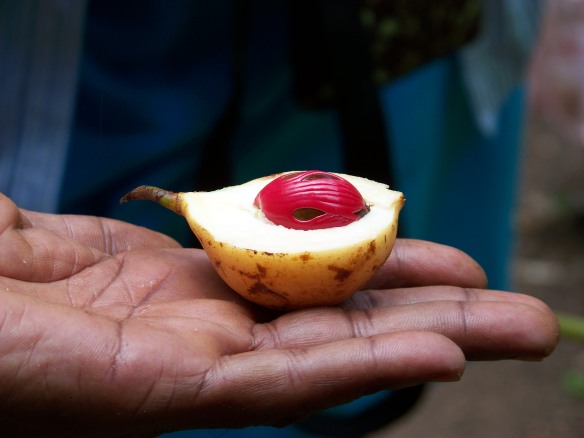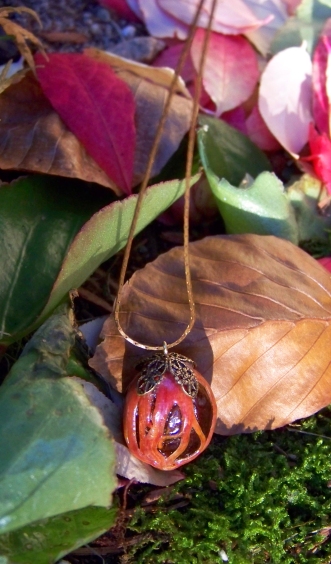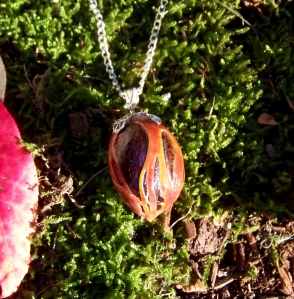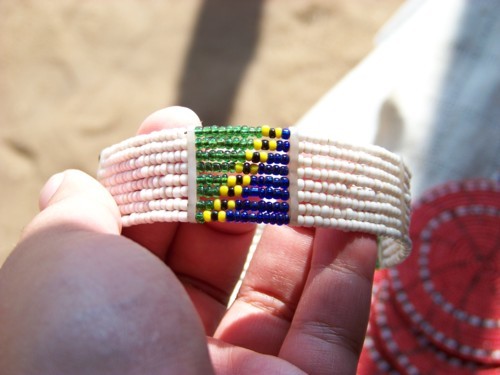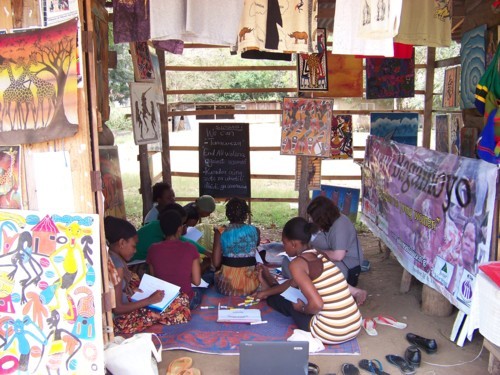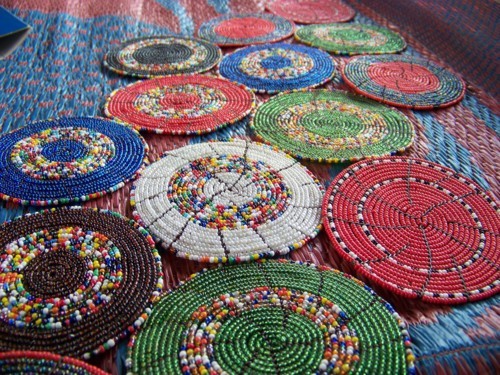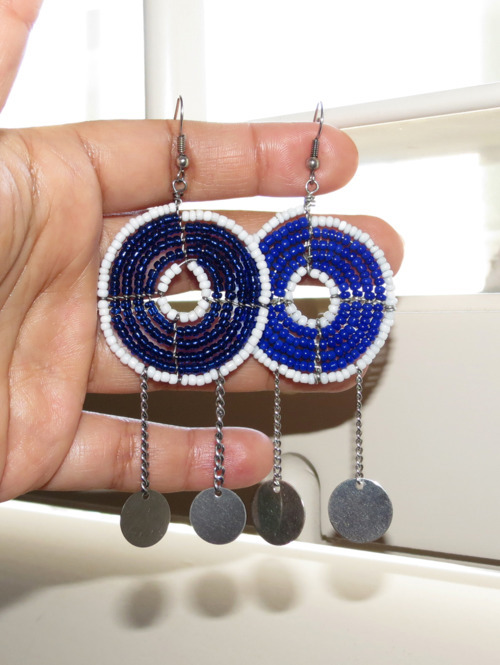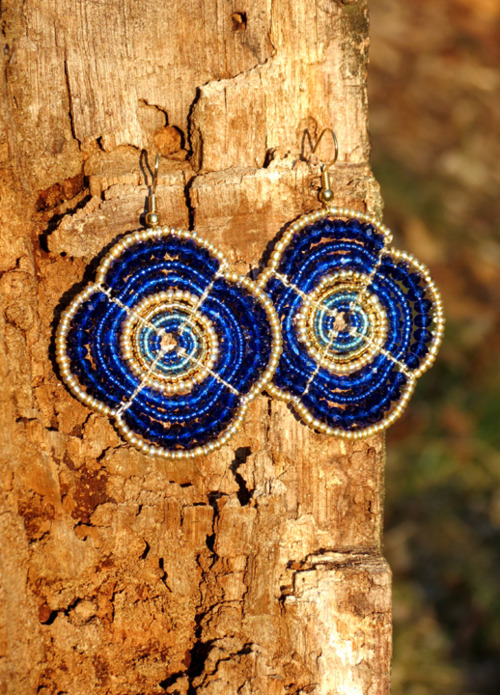I have to say, I think nature does it best. The crazy, colorful, complex creations that spring up around us are better than anything I could create. My entire motivation in art-making is to attempt to capture some of that mysterious beauty, and make it wearable. I think I’ll spend the rest of my life trying, (and failing, really). But I try. And it’s intriguing to try, and to discover new imagery, new vistas, that seem like they should, and should always have been, worn.
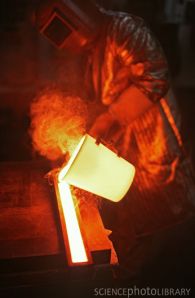 In creating, I like keeping close to the Earth, or as close to it as I can.
I love thinking about the origins of glass; inert sand and base
elements fired till molten, transforming into delicate transparency, as
ancient as we are, really. Who
figured it out first? Or mastered the art of it, somehow knowing how to
handle a material no one had ever witnessed before. It had to be
inherently frightening, and dangerous. I strive to create something new
like that, an innovation, that will be forever mysterious and
fascinating.
In creating, I like keeping close to the Earth, or as close to it as I can.
I love thinking about the origins of glass; inert sand and base
elements fired till molten, transforming into delicate transparency, as
ancient as we are, really. Who
figured it out first? Or mastered the art of it, somehow knowing how to
handle a material no one had ever witnessed before. It had to be
inherently frightening, and dangerous. I strive to create something new
like that, an innovation, that will be forever mysterious and
fascinating.I saw mace once, the raw, sheathed form of nutmeg. I thought it was incredibly beautiful, and how sad, that we only value the brown, ground spice from underneath, and most of us never get to see it in its natural form. What an incredible piece of jewelry it would make! When I went to Tanzania in 2010, I was so excited to go to a spice farm on the island of Zanzibar, and see where all of those fragrant/flavorful seasonings come from. We saw vanilla orchids and pepper vines, green and climbing upon the Zanzibar apple and cinnamon trees.
I smelled the root of the cinnamon tree, identical to the scent of Vicks Vapo-Rub. I squashed turmeric roots and curry leaves between my fingers leaving orange hues and spicy scents behind. And then, Mr. Abeid, of the spice farm’s title, held out a yellow bulb, spotted brown and unassuming, and sliced it in half to expose the scarlet mace beneath. It was my first site of it, fresh, and I was enamored. I couldn’t take Mr. Abeid’s fresh stock home, but happily purchased a pack of his dried mace to squirrel away in my suitcase.
Back in the states, I was at a bit of a loss as to how to handle the pods, preserve their color, hang them or showcase them to their fullest. I decided they were so beautiful on their own, I would just shellac them, and drill them to affix a beautiful bail, and hang them from a simple chain. The finished necklaces became some of my favorite pieces, attached to a wonderful memory of a far-off adventure.
I hope to go on more adventures, acquire more materials that bring the energy of their origins with them. Create more work, and send more out to you, with the hope that that energy carries through.

